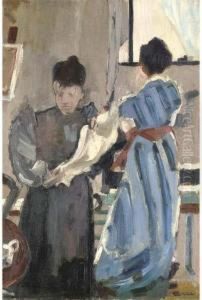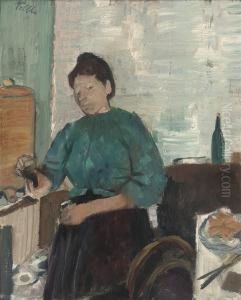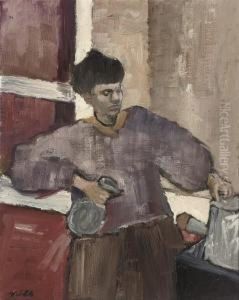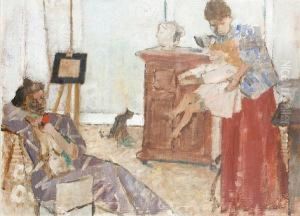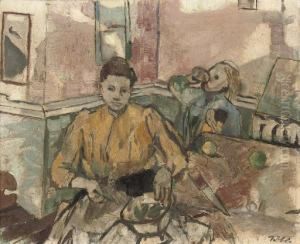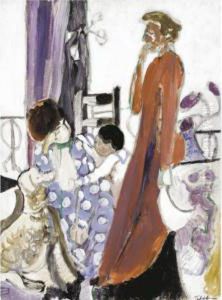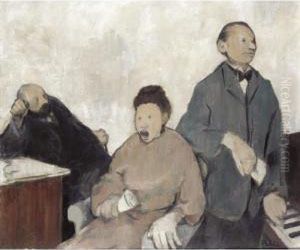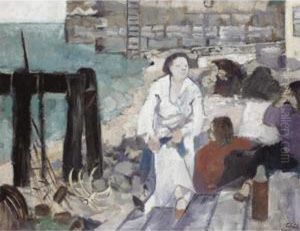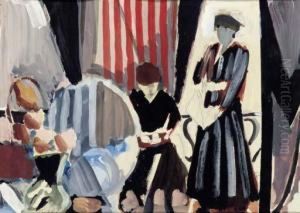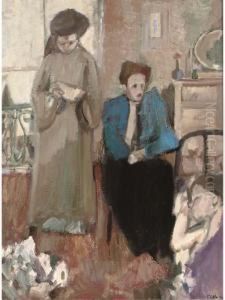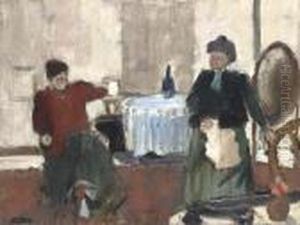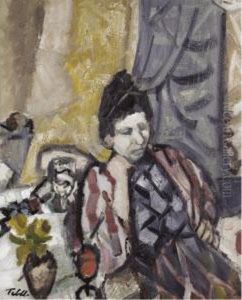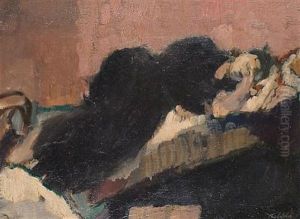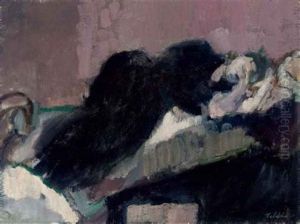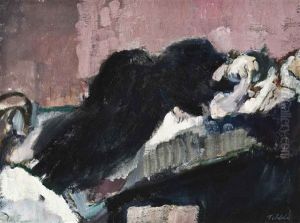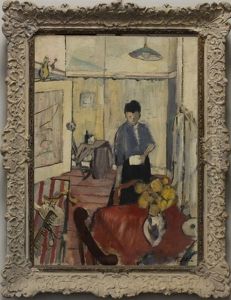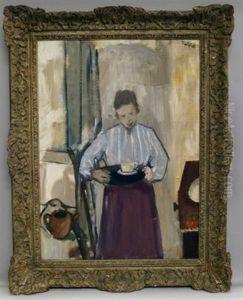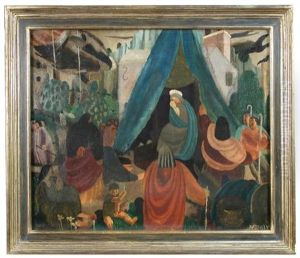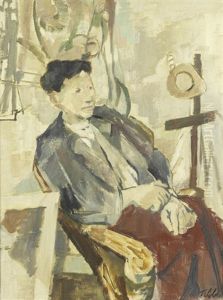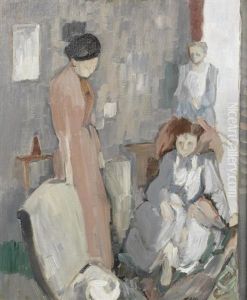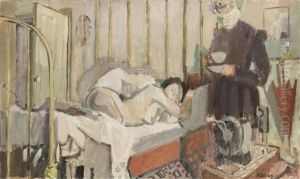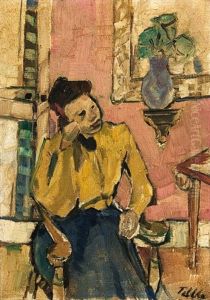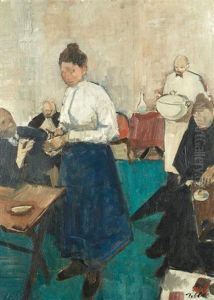Geoffrey Tibble Paintings
Geoffrey Tibble was a British painter known for his work in the interwar and immediate post-war periods. Born in 1909, Tibble's career was marked by his involvement with the British Surrealist movement and the Objective Abstraction group, though his work transcended easy categorization. Tibble's artistic journey began with his education at the Slade School of Fine Art, where he was exposed to and influenced by various avant-garde movements. His early work was characterized by a blend of abstraction and figuration, demonstrating a keen interest in exploring the boundaries of visual perception and the nature of reality.
Tibble's contributions to the art world were somewhat overshadowed by his contemporaries and the tumultuous events of the 20th century, including the Great Depression and World War II. Despite this, he maintained a consistent output and participated in several significant exhibitions, contributing to the discourse around British modernism. His style evolved over the years, from the more abstract and conceptual works of his youth to a mature style that incorporated elements of realism, yet always with a distinctive, idiosyncratic twist.
During the 1930s, Tibble became associated with the Objective Abstraction movement, a group of artists seeking a new form of abstraction that was grounded in reality but eschewed direct representation. This movement aimed to create art that was universal and timeless, free from the constraints of traditional representational practices. Tibble's work from this period is notable for its bold use of color, geometric forms, and a dynamic sense of composition.
World War II marked a turning point in Tibble's career. The war's impact on society and culture prompted a shift in his artistic focus towards more recognizable subjects, though he never abandoned his interest in exploring the underlying structures of the visual world. Post-war, his work increasingly featured human figures and landscapes, rendered in a style that balanced observational accuracy with a surreal, dream-like quality.
Tibble's contribution to British art was cut short by his untimely death in 1952. Despite his relatively brief career, he left behind a body of work that continues to be studied and appreciated for its originality and insight into the human condition. His paintings are included in various public collections, providing a testament to his skill and vision. Tibble remains an intriguing figure in the history of 20th-century British art, representing a bridge between the abstract movements of the early century and the more figurative concerns of the post-war era.
